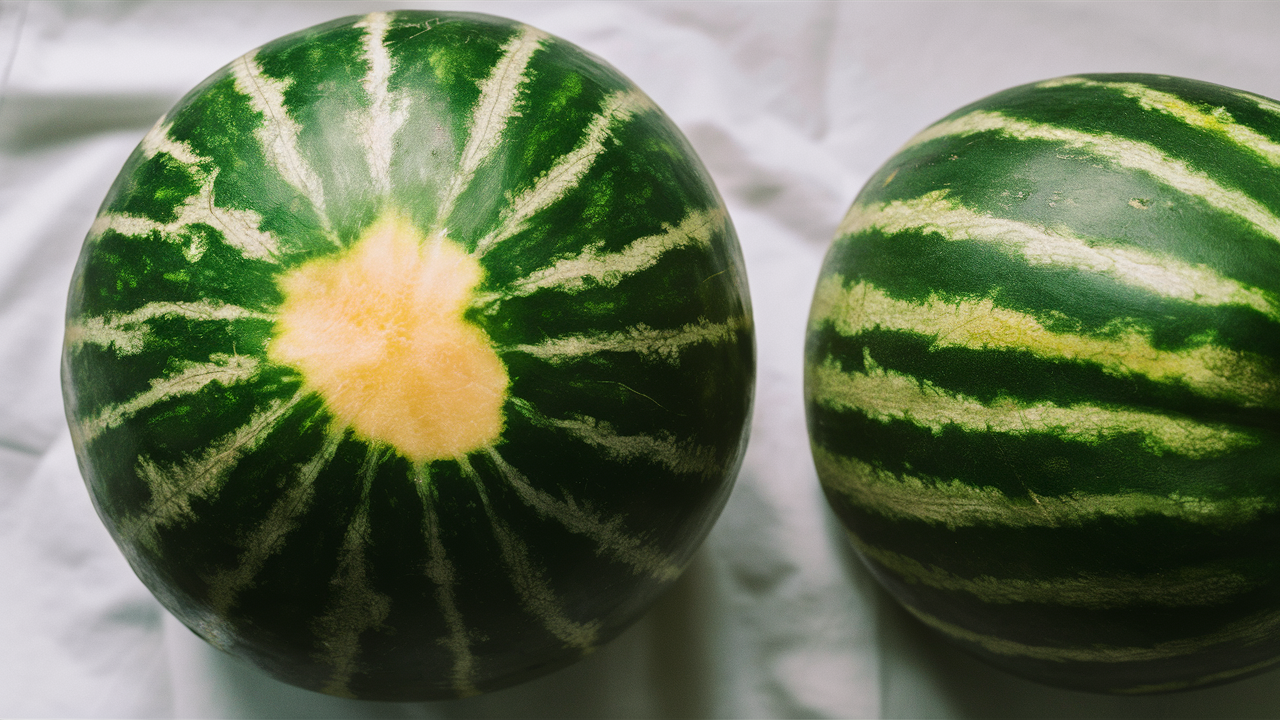
Conquering the Watermelon: A Guide to Picking the Perfect Summer Treat
Summer’s heat screams for refreshment, and what’s more refreshing than a perfectly ripe, juicy watermelon? But selecting the ideal watermelon can feel like a gamble. Fear not, watermelon warriors! Here’s a comprehensive guide to picking the sweetest, most delicious watermelon every time:
Field Spot Secrets: Those white patches on watermelons aren’t blemishes – they’re field spots, where the melon rested on the vine. These spots hold the key to ripeness. Look for a creamy-yellow or even orange-yellow field spot. This golden hue indicates the watermelon had ample time to ripen on the vine, translating to superior sweetness.
Webbing Wisdom: The web-like markings on a watermelon, called webbing, reveal a hidden story about the flower’s pollination. More webbing signifies more bee visitors, and more bee visitors translate to a sweeter watermelon. So, the more prominent the webbing, the better!
The Great Watermelon Gender Debate: Watermelons have an interesting quirk – they can be classified as « boy » or « girl. » Boy watermelons are taller and more elongated, while girl watermelons are rounder and shorter. While the debate rages on among watermelon enthusiasts, many believe girl watermelons, with their compact shape, tend to concentrate more sugar, making them the sweeter choice.
Skip Giants: Our natural instinct might be to grab the biggest watermelon for the most value. However, resist the urge to go supersized. Average-sized watermelons tend to have a higher flesh-to-rind ratio, meaning more delicious watermelon to enjoy and less rind to discard. So, stick to the happy medium for the most flavorful bang for your buck.
The Tail Tells All: The telltale sign of ripeness lies in the watermelon’s tail, the curly appendage opposite the blossom end. A green tail signifies the watermelon was picked prematurely and may not be as sweet. Look for a watermelon with a dry, brown tail, indicating it was ripened to perfection on the vine.
Bonus Tip: The Thump Test: While not a foolproof method, some watermelon veterans swear by the « thump test. » Gently knock on the watermelon with your knuckles. A ripe watermelon will produce a deep, hollow sound, while an unripe one will sound dull.
By following these tips, you’ll be a watermelon-picking pro in no time. So next time summer heat strikes, grab your newfound knowledge and conquer the watermelon selection with confidence!

